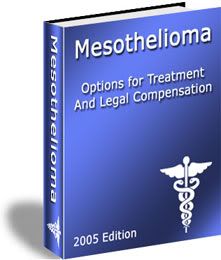Asbestos exposure, pleural mesothelioma, and serum osteopontin levels.
Title
Asbestos exposure, pleural mesothelioma, and serum osteopontin levels
Source
New England Journal of Medicine. 353(15):1564-73, 2005 Oct 13.
New England Journal of Medicine. 353(15):1564-73, 2005 Oct 13.
BACKGROUND:
We investigated the presence of osteopontin in pleural mesothelioma and determined serum osteopontin levels in three populations: subjects without cancer who were exposed to asbestos, subjects without cancer who were not exposed to asbestos, and patients with pleural mesothelioma who were exposed to asbestos.
METHODS:
A group of 69 subjects with asbestos-related nonmalignant pulmonary disease were compared with 45 subjects without exposure to asbestos and 76 patients with surgically staged pleural mesothelioma. Tumor tissue was examined for osteopontin by immunohistochemical analysis, and serum osteopontin levels were measured by an enzyme-linked immunosorbent assay.
RESULTS:
There were no significant differences in mean serum osteopontin levels between age-matched subjects with exposure to asbestos and subjects without exposure to asbestos. In the group with exposure to asbestos, elevated serum osteopontin levels were associated with pulmonary plaques and fibrosis but not with normal radiographic findings, plaques alone, or fibrosis alone. Serum osteopontin levels were significantly higher in the group with pleural mesothelioma than in the group with exposure to asbestos. Immunohistochemical analysis revealed osteopontin staining of the tumor cells in 36 of 38 samples of pleural mesothelioma. An analysis of serum osteopontin levels comparing the receiver-operating-characteristic curve in the group exposed to asbestos with that of the group with mesothelioma had a sensitivity of 77.6 percent and a specificity of 85.5 percent at a cutoff value of 48.3 ng of osteopontin per milliliter. Subgroup analysis comparing patients with stage I mesothelioma with subjects with exposure to asbestos revealed a sensitivity of 84.6 percent and a specificity of 88.4 percent at a cutoff value of 62.4 ng of osteopontin per milliliter.
CONCLUSIONS:
Serum osteopontin levels can be used to distinguish persons with exposure to asbestos who do not have cancer from those with exposure to asbestos who have pleural mesothelioma.




0 Comments:
Post a Comment
<< Home